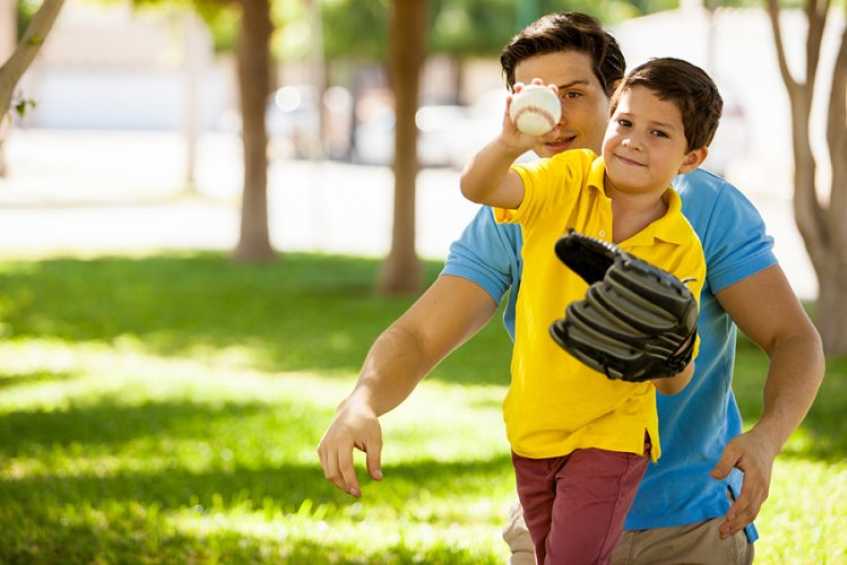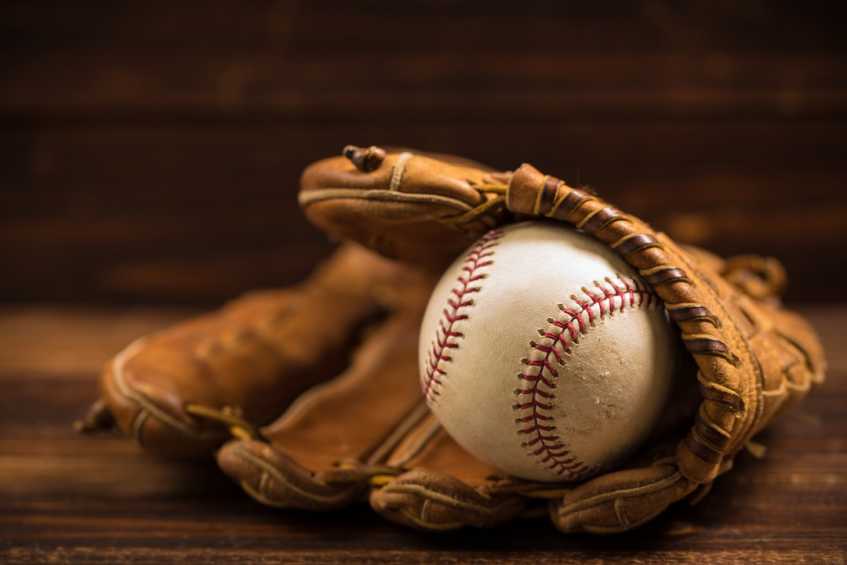
9 Valuable indoor fielding drills
Knowing some valuable indoor fielding drills can help teams learn the fundamentals of fielding. Also, failure to do these indoor fielding drills may get teams off to a slow start defensively. Coaches should realize that batting groundballs as when outside, often leads to trouble once the team is on a real dirt ballfield. Many teams begin practices indoors due to weather. In the northern states, baseball players often start working out in January, if not before, and they must learn to use their time and space to the best benefit. Unfortunately, many of the indoor fielding drills that coaches have players perform often hurts more than helps, come the season. The reason for that is that balls bounce true indoors that players get away with incorrect fielding habits. Players know precisely where balls hop on smooth surfaces and know for sure balls will move upwards, leading to lazy habits. The problem is that outside, on dirt and grass, those pure and for-sure hops are less likely to occur. Therefore, the lazy habits players use indoors do not work when outside on a real baseball diamond. The lazy habits usually show up by players failing to get the glove below the hops because they know exactly how high the ball will bound when on indoor surfaces. However, once outside on a real ball diamond, often the ball stays down in an unpredictable way and without the glove down to begin, errors result. With the above in mind and the importance of teaching players to keep their glove below the hop, coaches should roll balls at first and often, instead of hitting balls with the bat. The bat often produces high hoppers which are the ones that are predictable and lead to bad habits. By rolling balls, coaches can keep the balls hugging the ground.
Indoor Fielding Drills that are Worthwhile
 Following are some basic indoor fielding drills that coaches should be doing with players. Failure to do these indoor fielding drills often has teams get off to a slow start defensively. To avoid players becoming lazy and to encourage the fielding fundamentals, coaches should do the following indoor fielding drills.
Following are some basic indoor fielding drills that coaches should be doing with players. Failure to do these indoor fielding drills often has teams get off to a slow start defensively. To avoid players becoming lazy and to encourage the fielding fundamentals, coaches should do the following indoor fielding drills.
- This simple drill establishes the critical principles of fielding, those of staying low and getting the hands out front. Players kneel on both knees with their glove out front on the ground as coaches roll balls to them. Players should reach out and look the balls into their gloves and work on removing the ball with a two-finger throwing grip. Many young players take the ball out of the glove with a full hand grip, which is not the way to go. Likewise, many players fail to stay low with the head and glove so by beginning their indoor fielding drills this way, they learn the basics of fielding ground balls.
- A similar valuable drill teaches kids the backhand play. Players begin sideways on one knee, the opposite one from their glove side hand. Once again, player's start with the glove on the ground and slightly in front of their body as coaches roll balls to their backhand side. It is vital for kids to learn to keep the glove wide open for this catch and have a relaxed elbow as the catch the ball.
- One of my favorite drills goes like this. Coaches have a bucket of balls in front of them and set up on one knee about ten feet from the fielder. Coaches proceed to flip ball after ball at players in a rapid-fire way, where players have just enough time to catch the ball and flip it to their side. Coaches can roll groundballs or flip line drives at the player or off to their right or left, and even to where players jump for balls. The main thing coaches teach in this drill is that players should use just their glove (one hand) when catching balls off to the side and two hands for balls right at them.
- Set a taped line or a broomstick down and have players begin by standing a foot or so behind it. Coaches roll low hop ground balls to them where they must reach out and catch the ball in front of the object, before crow hopping over it to throw. After a period, players back up and perform the same drill by charging the ball and catching it in front as above. This drill helps players get their hands out front, stay low, and keep their weight forward to hop over the object when throwing.
- The next drill may be most important. Players roll balls to players slowly, so players charge the ball on a dead run. First, coaches have players field the ball barehanded. This action keeps players staying down, watching the ball all the way to their hand and develop an aggressive attitude of charging the ball. Next, coaches have players charge the same rolled ball and have them catch the ball on the run on their glove side with one hand, followed by fielding the ball on their throwing side with two hands. This last one is the most challenging play but the most important for developing good footwork and fielding rhythm. The key is that players keep the same straightforward footwork as when fielding the ball bae-handed. As players advance with this drill, coaches should add the throw to first base from different arm angles.
Other Indoor Fielding Drills to Practice
- Coaches get about 25 feet from players and bounce balls with just one hop at various heights. Players must decide to either charge or lay back, with the goal of getting balls in the air before bouncing a second time, or on the short hop. When players feel they cannot get to the ball in that manner, they lay back and wait for the high hop on the second bounce, thereby avoiding the in-between hop the ones that come between the knees and waist, which are the toughest of all balls to catch. Coaching players to charge when in doubt, is an added benefit of this indoor fielding drill.
- Many young ballplayers do not take the proper angles to ground balls to their left and right. To help them with this, coaches set two objects, as extra fielders gloves, down on the floor, one three feet to their right and one three feet to their left. Coaches roll or hit balls firmly or semi-firmly to the player's left and right. Players must first go around the on-the-ground objects before charging the ball when time. The drill helps players learn to take better angles to the ball by correctly thinking to get in front of balls before charging them because many young players move straight in first, creating a wrong angle to catch and or throw the ball to first.
- The following fielding drill not only helps players with footwork, but it is also an excellent one for conditioning. Coaches hold a ball and stand a few feet away from players, who are down in ready position. Coaches then roll a ball to the players right, after that, they shuffle in front of the ball, field the ball, and flip it back to the coach who then rolls the ball tin the opposite direction for the player to shuffle back in front. Coaches continue this drill several times until players tire. Of course, this drill can be done with flipped balls in the air also, so players must hustle back and forth.
- Of course, outfield drills indoors are challenging, especially with a low ceiling facility, like most are. Using many of the above exercises from a further distance to mimic outfield play. One drill that is good for kids works like this. Players stand about ten feet in front of the coach and begin with their eyes closed. Coaches flip balls in the air in any direction and yell now at the same time. Players open their eyes, find the ball and react to try and catch it. This drill is a lot of fun for kids and one that helps players learn to look and judge balls, as well as working on their first step in the direction of the flipped fly ball.
[caption id="attachment_12135" align="alignright" width="300"] Indoor Fielding Drills Get them here[/caption] Using these indoor fielding drills helps players develop good fielding habits, and not lazy ones, making them ready for outdoor practices and games. #coachingbaseball #baseballfieldingtips
Indoor Fielding Drills Get them here[/caption] Using these indoor fielding drills helps players develop good fielding habits, and not lazy ones, making them ready for outdoor practices and games. #coachingbaseball #baseballfieldingtips




 Following are some basic indoor fielding drills that coaches should be doing with players. Failure to do these indoor fielding drills often has teams get off to a slow start defensively. To avoid players becoming lazy and to encourage the fielding fundamentals, coaches should do the following indoor fielding drills.
Following are some basic indoor fielding drills that coaches should be doing with players. Failure to do these indoor fielding drills often has teams get off to a slow start defensively. To avoid players becoming lazy and to encourage the fielding fundamentals, coaches should do the following indoor fielding drills. Indoor Fielding Drills Get them here[/caption] Using these indoor fielding drills helps players develop good fielding habits, and not lazy ones, making them ready for outdoor practices and games. #coachingbaseball #baseballfieldingtips
Indoor Fielding Drills Get them here[/caption] Using these indoor fielding drills helps players develop good fielding habits, and not lazy ones, making them ready for outdoor practices and games. #coachingbaseball #baseballfieldingtips
chandler allen says:
"Hi my name is chandler, i’ve enjoyed..."
On Wanting to tryout for summer ball. as an 18 year old
david graham says:
"With no current MLB team in Canada,..."
On With no current MLB team in
Charles Chavez says:
"To All Coaches: Do you have13U or..."
On Looking for Games